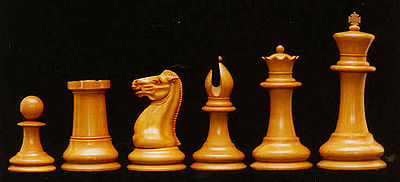Chess's history is so old that its ancestor games were created around the same time India's mathematical enlightenment. Since then, the game has been reinvented many times and survived many controversies. We will now explore the fascinating history of chess pieces, and the names they have taken on.
It was humble at first. The legend goes that the inventor introduced the game to a great King who was so impressed, he offered any reward he desired. The inventor requested that one wheat be placed on each square. Two on the second and four on the third, respectively, with each increment of doubling. Although the king agreed, they soon realized that you had run out of wheat before you made it to half-way.
It is not clear where the original game originated. Many game pieces have been recovered from related older games. Chaturanga is an Indian war epic that inspired this game.
Chaturanga had key pieces. They each had their own abilities, just as modern chess has: infantry, elephants, chariots and cavalry. It has been hard for researchers to separate the myths from facts about chess. There is also little archaeological evidence. However, some believe that chess may have originated in Chaturanga. (see The History of Chess From Chaturanga to Today, Ancient Precursors, and Related Games and A World of Chess).
Chess was popularized in Persia where it was loved by the nobility. At this point, new rules were introduced. The attacking player had to shout "King!" when a king was under attack. If the king couldn’t escape, "The king is helpless."
This makes a lot more sense that the modern exclamations "check" or "checkmate". These things are only possible because English speakers mistranslate Persian. The West's Persian "Shah!" sound like "check!" while "Shah Mat!" sounds like "checkmate!"
Chess on the Move: The New Rules and Names in Europe
Several other things were also lost in translation. One theory states that the elephant piece was misunderstood. Many Europeans didn't know what elephants were. The elephant was transformed into a bishop and had a greater range of motion.
The game of chess was ever-changing. The names and rules of chess were not the same in every place. Anyone could simply say that they were following different rules than the village's standard if they started losing. It would not be difficult to counter that.
The most controversial version of chess in Middle Ages was the dice, which made it look too much like gambling. The Church stood firm. Bishops were punished for playing chess. Bans were passed and priests excommunicated. The element of chance in Chess was quickly eliminated - and if it hadn’t, perhaps chess would have been extinct.
We don't know much about the old chess pieces or the rules that the clergy and aristocrats used to play the game. There are still a few sets that exist, including the Charlemagne chessmen.
The Charlemagne Chessmen
The Western chessboard was plagued by elephants, along with dice. They would sometimes appear, but other times knights would take their place.
One example of a set that includes elephants is the Charlemagne chessmen sets. This could be an indication of Kufric influences but its history is not well-known. Another difference between modern chess is in the "pawns". They are foot soldiers complete with serious faces and outfits.

Unfortunately, many of these pieces were destroyed during the French Revolution. Today, we only have 16. These pieces are evidence of a different game than the one we play today. It was not just about strategy; it was about the wonderful stories and personalities of those who played that strategy.
The game was about to change.
Staunton Chess Set
The chess pieces toss their hats and sent the elephants to the zoos. They then wiped their faces in 1849. Patented was the Staunton chess set. You may recognize it.

Although the names of the chess pieces are largely the same as the Charlemagne set, this set has a completely different look. They were designed for architectural columns and are modern, simple, and clean.
It's easy to see why these chess pieces are so popular. They are easy to spot on the board because of their simplicity. None of the pieces has the Charlemagne chessmen's personalities or stories. Staunton sets feature pieces, rather than chessmen.
The Staunton chess set and the standard rules are all familiar to us. Modern chess pieces and rules are easy to take for granted. But, it's important to remember that chess was not yet a developed sport.
Although unique personalities and looks in chess pieces have become rarer since the Staunton set, their history is still very relevant. Every day, researchers discover new ways to solve problems. They discovered a "warder piece" in an old chess set in July 2019. The four remaining major pieces of this set, the Lewis Chessmen, are still to be discovered. This fascinating field of history continues to surprise year after year.
